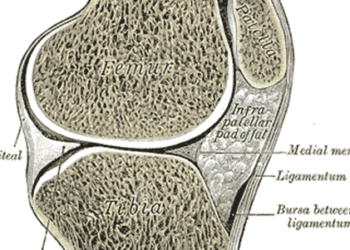Do higher doses help? Infant bone health similar despite varying Vitamin D doses
Image: PD
1. There was no difference in bone mineral content, as measured by dual-energy absorptiometry scans, in any of the different Vitamin D dosage groups, including the standard 400IU supplementation group.
2. It remains unknown if non-bone health benefits may arise from Vitamin D supplementation in excess of 400IU daily.
Evidence Rating Level: 2 (Good)
Study Rundown: Vitamin D supplementation is required in breastfed infants, as necessary amounts are not provided in breastmilk. For this reason, 400 IU supplementation is recommended daily, as it has been demonstrated to prevent rickets. There has been some debate as to the optimal serum concentrations of 25-OH-Vitamin D. While the authors of this study intended to determine dosage of Vitamin D supplementation to maintain 25-OH-Vitamin D levels > 75nmol/L, the only treatment group to achieve this (1600IU/d) had levels so elevated that there was concern for hypercalcemia. Perhaps more importantly, the study affirms that 400 IU/d led to comparable measures of bone health in comparison to higher levels of supplementation using measures such as as measured by dual-energy absorptiometry (DEXA) scans.
The strengths of this study include its analysis of variables which may have an effect on plasma 25-OH-Vitamin D levels, including the potential for differential sunlight exposure, nutrition other than breastfeeding, parental demographics and compliance. Among limitations, the population being studied was narrow and did not include preterm or otherwise ill infants, or those who may be darker skinned and require more Vitamin D supplementation. Given that standard supplementation provide equal levels of bone health compared to increased supplementation, further research will be crucial in determining if there are any other benefits that would arise from further Vitamin D supplementation.
Click to read the study, published today in JAMA
Click to read an accompanying editorial, published today in JAMA
Relevant Reading: Evaluation, treatment, and prevention of vitamin D deficiency: an Endocrine Society clinical practice guideline
In-Depth [prospective, double-blind, randomized]: 132 one month old infants from a single center in Montreal, Canada were enrolled in the study. These infants were otherwise healthy, at term, and breastfed. They were randomized for Vitamin D supplementation in dosages of 400 IU/d, which is the current recommended dose, 800 IU/d, 1200 IU/d, or 1600 IU/d. The primary outcome measure was a concentration of 25-OH-Vitamin D of 75 nmol/L among >97.5% of sample at 3 months. The only group to successfully reach this goal was the 1600 IU/d group. However, this group was associated with plasma 25-OH-Vitamin D concentrations that were so high (>250nmol/L) that it required discontinuation of this treatment group. Neither bone mineral density nor growth differed among any of the supplementation treatment groups.
By Anne Marie Walters and Rif Rahman
© 2013 2minutemedicine.com. All rights reserved. No works may be reproduced without written consent from 2minutemedicine.com. Disclaimer: We present factual information directly from peer reviewed medical journals. No post should be construed as medical advice and is not intended as such by the authors or by 2minutemedicine.com. PLEASE SEE A HEALTHCARE PROVIDER IN YOUR AREA IF YOU SEEK MEDICAL ADVICE OF ANY SORT. Content is produced in accordance with fair use copyrights solely and strictly for the purpose of teaching, news and criticism. No benefit, monetary or otherwise, is realized by any participants or the owner of this domain.







